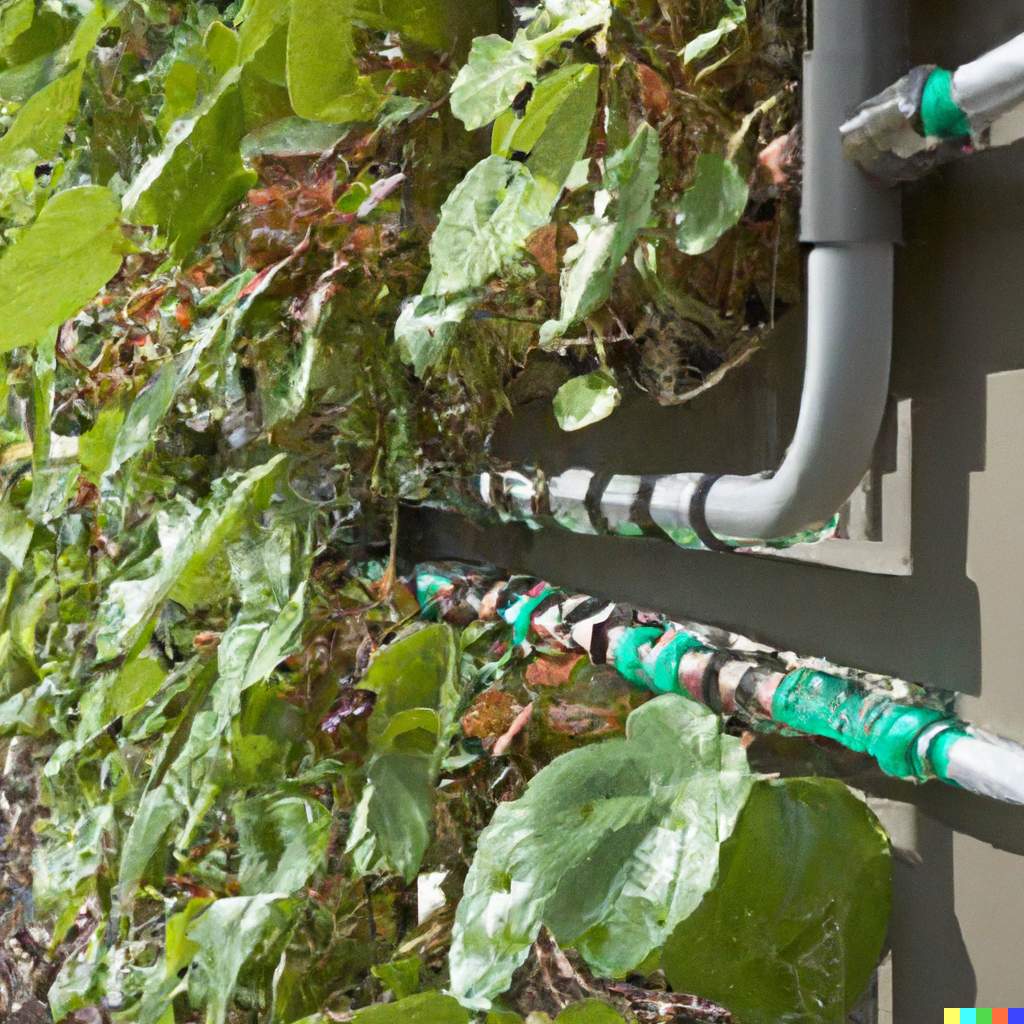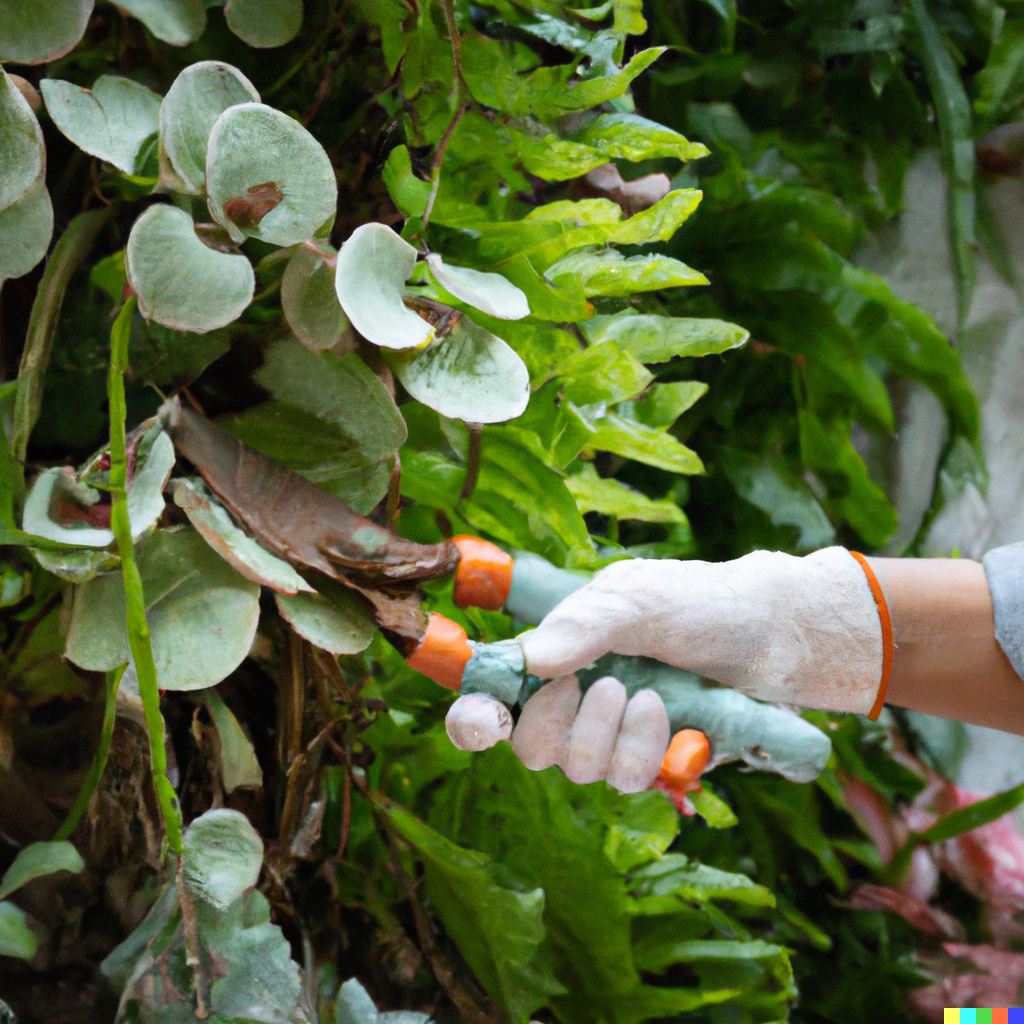Living wall maintenance is essential to ensuring that these vertical gardens remain vibrant and healthy. Specifically, it involves a series of tasks and considerations to keep the plants thriving on the exterior or interior of buildings.
Living walls, with their cascading plants and lush greenery, have become a popular feature in urban environments. However, like any garden, they require regular attention and care. Proper maintenance ensures that these walls look aesthetically pleasing and function optimally, providing benefits such as improved air quality and natural insulation. As we delve deeper into this topic, we’ll uncover the various facets of maintaining a living wall and the best practices to adopt.
Overview of Living Wall Maintenance
The maintenance of living walls is a blend of art and science, ensuring that the vertical gardens remain as breathtaking as the day they were installed. While they offer a unique aesthetic appeal, their upkeep requires a keen understanding of plant care, structural considerations, and environmental factors.
- Living Wall Maintenance involves regular checks for plant health, ensuring proper irrigation💧, and timely pruning. Like a horizontal garden, a vertical one needs love and attention to flourish.
- Importance of Living Wall Maintenance: Regular maintenance ensures that the living wall remains a source of beauty and doesn’t become an eyesore. It also guarantees that the plants get the nutrients they need and are free from pests.
- Challenges in Living Wall Maintenance: Unlike traditional gardens 🌿, living walls present unique challenges. Gravity plays a role in how water💧 and nutrients are distributed, and accessing plants for care can sometimes be tricky.
Maintaining a living wall is a rewarding endeavor. With the right knowledge and tools, you can ensure that your vertical garden remains a vibrant centerpiece for years to come. It’s not just about keeping the plants alive; it’s about ensuring they thrive and continue to bring joy to all who see them.
| Maintenance Task | Frequency |
|---|---|
| Watering | Daily/Weekly |
| Pruning | Monthly |
| Pest Inspection | Weekly |
| Fertilization | Every 2-4 months |
Water and Irrigation
Watering💧 is the lifeblood of any garden, and living walls are no exception. Proper irrigation ensures that every plant gets the moisture it needs, from the topmost fern to the lowest succulent. However, because of their vertical nature, living walls have unique watering needs that differ from traditional gardens.
- How often do green walls need to be watered? Living walls typically need consistent moisture. Depending on the type of plants and the climate, watering can range from daily to weekly. It’s essential to monitor the soil’s moisture levels and adjust accordingly.
- Do living walls use too much water? Not necessarily. With efficient irrigation systems, living walls can use water💧 judiciously, ensuring minimal wastage. Drip irrigation, for instance, delivers water directly to the plant roots, reducing evaporation.
- How does the height of the living wall system affect irrigation? The higher the wall, the more strategic the irrigation needs to be. Gravity can cause water to flow downwards, leaving the top plants drier than the bottom. An effective irrigation system will account for this.
- When do the irrigation lines need to be blown out on outdoor green walls? Before winter sets in, it’s crucial to clear the irrigation lines to prevent freezing and potential damage. This process involves forcing air through the lines to remove any residual water💧.
- Do living walls need to be watered during winter? Yes, but less frequently. While many plants enter a dormant phase in colder months, they still require moisture. However, overwatering can lead to root rot, so it’s a delicate balance.
Watering and irrigation are foundational to the health of a living wall. By understanding the unique needs of a vertical garden and adjusting your watering routine accordingly, you can ensure that every plant receives the nourishment it requires. Remember, it’s not just about quantity but also the quality and consistency of watering that makes all the difference.

Plant Care
Tending to the plants on a living wall is akin to nurturing a vertical forest. Each plant, whether it’s a vibrant fern or a delicate orchid, has its own set of needs. While the vertical orientation presents some unique challenges, with a bit of knowledge and care, you can ensure that each plant thrives and contributes to the wall’s overall beauty.
- How do you maintain a living plant wall? Regular checks are vital. Look out for yellowing leaves, signs of pests, or any other abnormalities. Prune dead or overgrown plants to allow for new growth and better air circulation.
- How long should indoor plants be artificially lit? If your living wall is indoors and lacks natural light, artificial lighting can help. Plants typically need 12-16 hours of light daily. Using LED grow lights can provide the necessary spectrum of light without overheating the plants.
- Pruning and Replacing Plants: Regular pruning keeps plants healthy and the wall looking tidy. If a plant dies or becomes too overgrown, replace it. Always choose plants that are suitable for the specific conditions of your wall, considering factors like light, humidity, and temperature.
- How often do green wall plants require replacement? With proper care, many plants can last for years. However, some might need replacement every 6-12 months, especially if they outgrow their space or become diseased.
Plant care is at the heart of living wall maintenance. By regularly monitoring the health of each plant, ensuring they receive adequate light, and addressing any issues promptly, you can maintain a lush and vibrant living wall. It’s a labor of love, but the rewards—a thriving vertical garden that captivates and soothes—are well worth the effort.
Soil and Fertilization

The foundation of any thriving garden, vertical or horizontal, lies in its soil. For living walls, the soil not only provides anchorage but also supplies essential nutrients to the plants. Given the unique structure of living walls, the soil and fertilization methods employed need special attention to ensure optimal plant health. Note: we also have a soil-less living wall guide![]() .
.
- Soil Care and Fertilization: The soil in a living wall should be lightweight yet rich in nutrients. Regularly check the soil’s pH and nutrient levels. A pH between 6.0 to 7.5 is generally ideal for most plants. Adjustments can be made using lime or sulfur.
- How do I fertilize my green wall? Fertilization replenishes the nutrients that plants consume. Use a balanced, slow-release fertilizer that provides a steady supply of nutrients over time. Liquid fertilizers can also be integrated into the irrigation system for even distribution.
- Frequency of Fertilization: Depending on the plants and the soil’s initial nutrient content, fertilization might be needed every 2-4 months. Always follow the recommended dosage to avoid over-fertilization, which can harm plants.
- Monitoring Soil Health: Over time, the soil can become compacted or depleted of nutrients. Regularly aerate the soil to ensure good air circulation to the roots. If nutrient levels drop significantly, consider replacing the soil or adding compost.
Soil and fertilization are the unsung heroes of a successful living wall. By ensuring the soil remains rich and aerated, and by providing plants with the nutrients they need, you lay the groundwork for a flourishing vertical garden. Remember, a plant’s health often mirrors the quality of its soil, so give it the care and attention it deserves.
Structural and Safety Concerns
Living walls, while a marvel of design and nature, come with their own set of structural challenges. Ensuring the safety and stability of these vertical gardens is paramount, not just for the plants but also for the people and structures around them. A well-maintained structure can prevent accidents and prolong the life of the living wall.
- Can the LiveWall structure be climbed on for maintenance? While living walls are sturdy, they aren’t designed to bear the weight of a person. Always use ladders or scaffolding for maintenance tasks. Avoid putting pressure on the wall itself.
- What concerns are there with salt and chemical deicers? These chemicals, often used in winter, can be harmful to plants and the structure of the living wall. Ensure runoff from deicers doesn’t come in contact with the wall. If exposure occurs, rinse the area thoroughly with water💧.
- Structural Integrity: Regularly inspect the wall’s structure for signs of wear, rust, or damage. Ensure that the mounting brackets, panels, and other components are secure. Address any issues promptly to prevent larger problems down the line.
- Weight Concerns: The combined weight of soil, plants, and water💧 can be significant. Ensure that the supporting wall can handle this load. It’s also essential to ensure that the drainage system is working efficiently to prevent waterlogged sections, which can add undue weight.
Safety and structural integrity go hand in hand when it comes to living walls. By regularly inspecting the structure, being mindful of external chemicals, and ensuring the wall isn’t overloaded, you can enjoy the beauty of your vertical garden without any worries. Remember, a living wall is as much an engineering feat as it is a botanical one, and both aspects deserve equal attention.
Pests and Diseases
Every garden, no matter how well-maintained, can face the occasional pest or disease. Living walls, with their dense plantings, can sometimes be a haven for unwanted critters or fungal infections. However, with vigilance and timely action, these issues can be nipped in the bud, ensuring the continued health and beauty of the wall.
- Preventing Pests and Diseases: Prevention is always better than cure. Regularly inspect your living wall for signs of pests like aphids, spider mites, or mealybugs. Look out for discolored or spotted leaves, which can indicate a fungal infection.
- Natural Pest Control: Instead of reaching for chemical pesticides, consider natural predators like ladybugs or lacewings. These beneficial insects can help keep pest populations in check without harming your plants.
- Disease Management: If you spot signs of fungal or bacterial diseases, remove the affected plants to prevent the spread. Ensure good air circulation and avoid overwatering, as damp conditions can promote fungal growth.
- Routine Checks: Make it a habit to inspect your living wall at least once a week. Catching pests or diseases early can make treatment more effective and reduce the risk of widespread damage.
Pests and diseases can be a challenge, but they’re not insurmountable. With regular checks, a keen eye for early signs, and a preference for natural solutions, you can ensure that your living wall remains a healthy and vibrant ecosystem. Remember, a little prevention goes a long way in preventing bigger problems down the line.
Maintenance Costs
Maintaining a living wall is an investment in time, effort, and resources. While the aesthetic and environmental benefits of a living wall are undeniable, it’s essential to be aware of the associated costs. Proper budgeting and understanding of these expenses can ensure that your vertical garden remains in top condition without breaking the bank.
- Initial Setup vs. Ongoing Maintenance: The initial cost of setting up a living wall can be significant, covering plants, soil, structure, and irrigation systems. However, ongoing maintenance costs, while recurrent, are generally lower. These include expenses for watering💧, pruning, pest control, and occasional plant replacements.
- Watering and Irrigation: Efficient irrigation systems, while an upfront investment, can save on water💧 bills in the long run. Drip irrigation systems, for instance, minimize water wastage and ensure plants get the moisture they need.
- Plant Care and Replacement: Plants may need to be replaced due to growth, disease, or seasonal changes. Budgeting for periodic plant replacements ensures your wall remains vibrant.
- Pest and Disease Management: While preventive measures can reduce the risk, occasional outbreaks might require treatments. Opting for natural solutions can be cost-effective and environmentally friendly.
- Structural Maintenance: Over time, parts of the living wall structure, like brackets or panels, might need repair or replacement. Regular inspections can help identify potential issues before they become costly problems.
Understanding the costs associated with living wall maintenance allows for better planning and ensures the longevity of your vertical garden. While there are expenses involved, the benefits—a beautiful, thriving wall that enhances air quality and overall well-being—make it a worthy investment. Remember, proactive care and timely interventions can often save costs in the long run.
Work and Effort in Living Wall Maintenance

Behind every thriving living wall lies a commitment to regular care and attention. The effort put into maintaining a living wall is a testament to the dedication of its caretaker. While the work involved might seem daunting to some, with the right approach and tools, it becomes a labor of love that yields lush, green rewards.
- Do living walls require too much ongoing work? While living walls do demand consistent care, the effort is comparable to maintaining a traditional garden. Regular watering💧, pruning, and inspections are key. With a routine in place, the work becomes manageable and even enjoyable.
- Efficiency in Maintenance: Using the right tools and techniques can significantly reduce the effort required. For instance, automated irrigation systems can ensure consistent watering💧 without daily manual intervention.
- Training and Knowledge: Understanding the specific needs of your living wall plants can make maintenance more straightforward. Investing time in learning about plant care, attending workshops, or even seeking advice from experts can make the process smoother.
- Seeking Professional Help: If the work becomes overwhelming, consider hiring professionals who specialize in living wall maintenance. They can provide regular care or even train you to handle the basics, reducing the overall effort.
The work and effort put into maintaining a living wall are reflections of the passion and commitment of its caretaker. While it does require attention, the joy of seeing a flourishing vertical garden, alive with color and vitality, makes every moment spent worthwhile. Remember, as with many things in life, the effort you put into your living wall directly impacts the rewards you reap.
Benefits and Value of Living Wall Maintenance
Proper maintenance of a living wall is not just about keeping plants alive; it’s about optimizing the numerous benefits these vertical gardens offer. A well-maintained living wall is a testament to the harmony between nature and urban spaces, and its value extends beyond mere aesthetics.
- Aesthetic Appeal: Regular maintenance ensures that the living wall remains vibrant and lush, becoming a focal point in any space. A thriving wall can transform a bland facade into a living piece of art.
- Improved Air Quality: Plants naturally filter and purify the air. By maintaining a healthy living wall, you ensure that this natural air purification system operates at its best, removing pollutants and providing fresh air.
- Energy Savings: Living walls act as natural insulators. A well-maintained wall can help regulate indoor temperatures, reducing the need for heating or cooling and leading to energy savings.
- Noise Reduction: Plants can absorb and deflect sound waves. Regular maintenance ensures that the wall remains dense, providing an effective barrier against noise pollution.
- Increased Property Value: A well-maintained living wall can enhance the value of a property. It serves as a unique selling point, showcasing commitment to sustainability and design.
The benefits and value of living wall maintenance are manifold. By investing time and effort in care, you not only ensure the wall’s longevity but also optimize the myriad advantages it offers. It’s a commitment that pays dividends in beauty, health, and sustainability.
Conclusion
Living walls are a beautiful fusion of nature and architecture, bringing a touch of green to urban landscapes. While living walls demand maintenance, care, and attention![]() , the rewards—a vibrant, thriving vertical garden—are well worth the effort. Living wall maintenance🌿 is not just a task; it’s a journey, a continuous engagement with nature. As you nurture your living wall, it, in turn, nurtures the environment, offering a breath of fresh air, both literally and figuratively. Embrace the journey, and let your living wall be a testament to the harmonious coexistence of man and nature.
, the rewards—a vibrant, thriving vertical garden—are well worth the effort. Living wall maintenance🌿 is not just a task; it’s a journey, a continuous engagement with nature. As you nurture your living wall, it, in turn, nurtures the environment, offering a breath of fresh air, both literally and figuratively. Embrace the journey, and let your living wall be a testament to the harmonious coexistence of man and nature.

